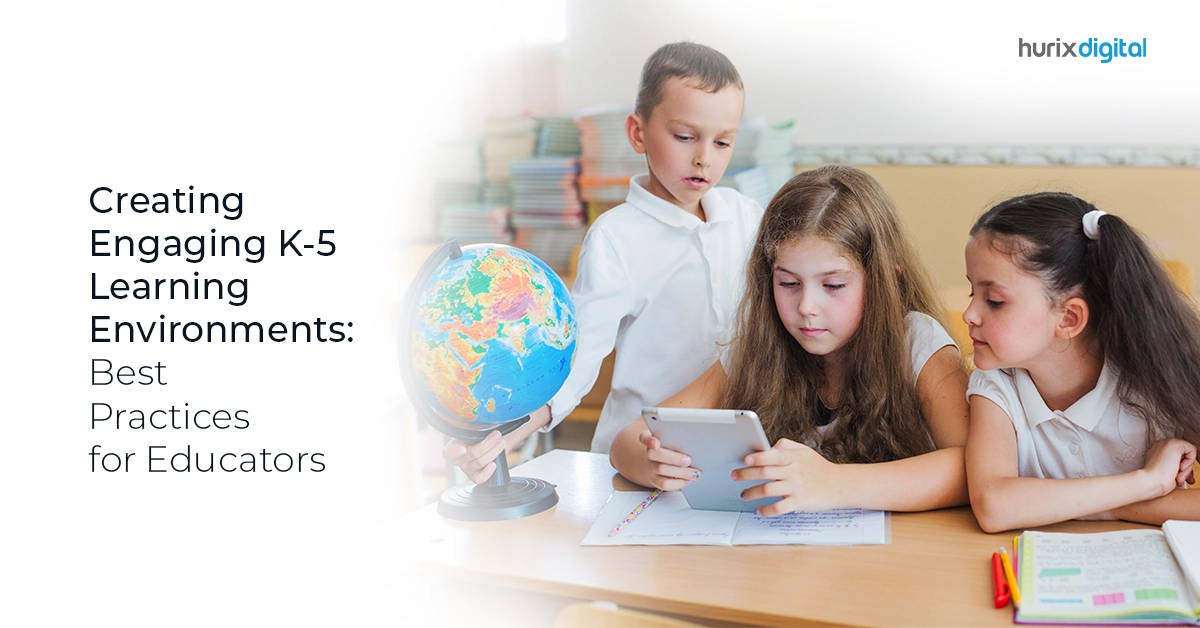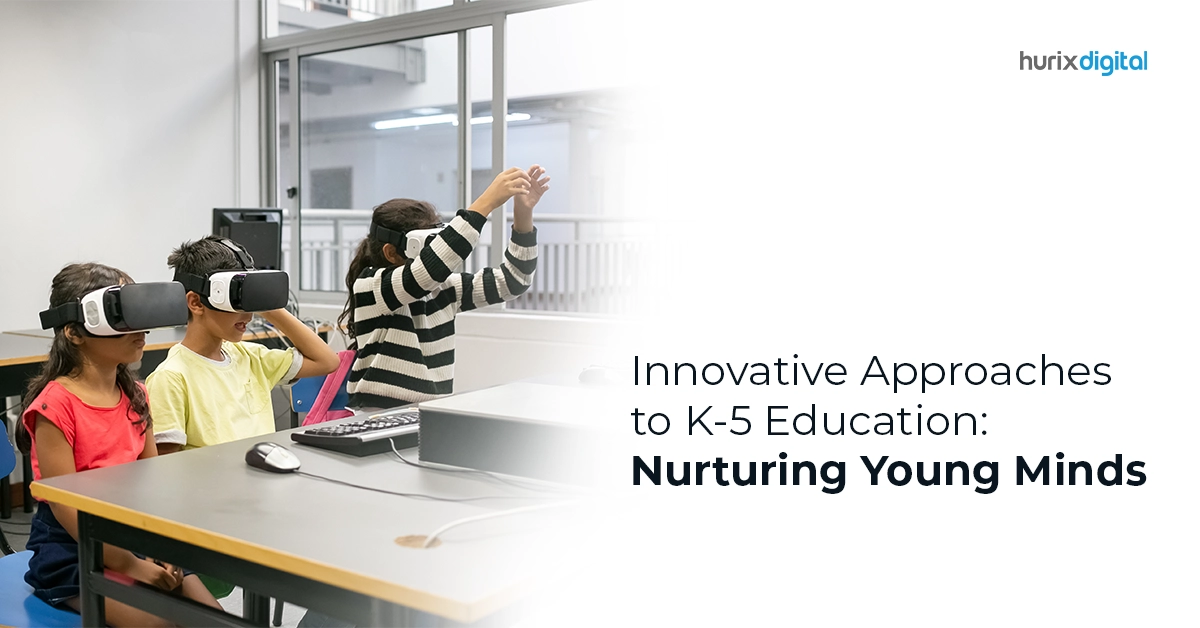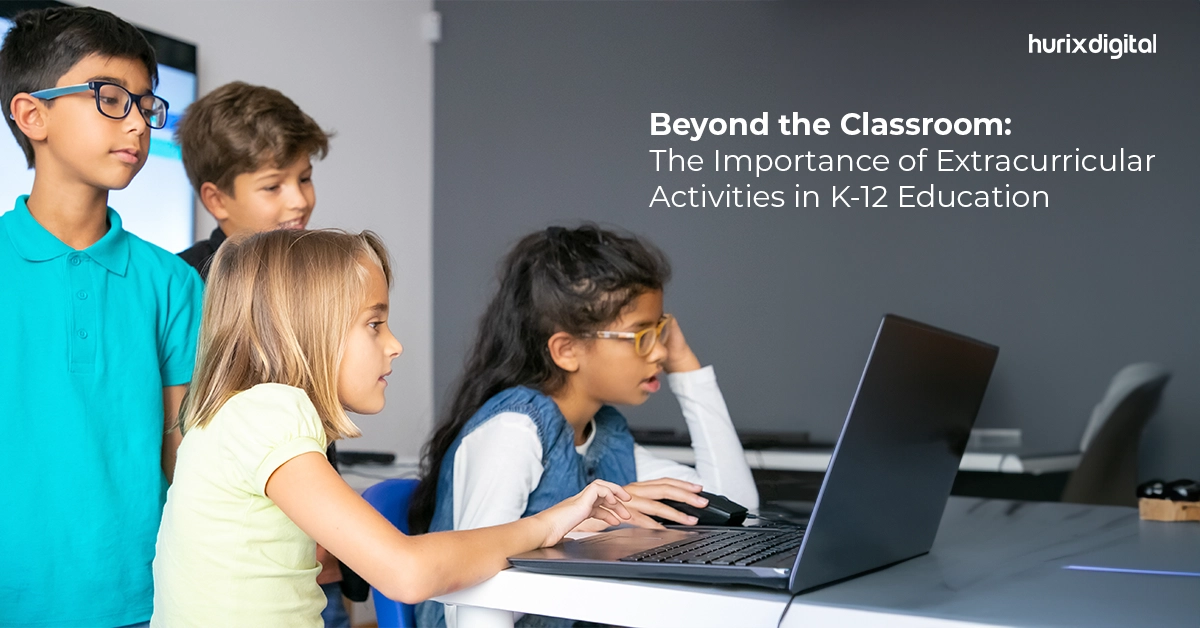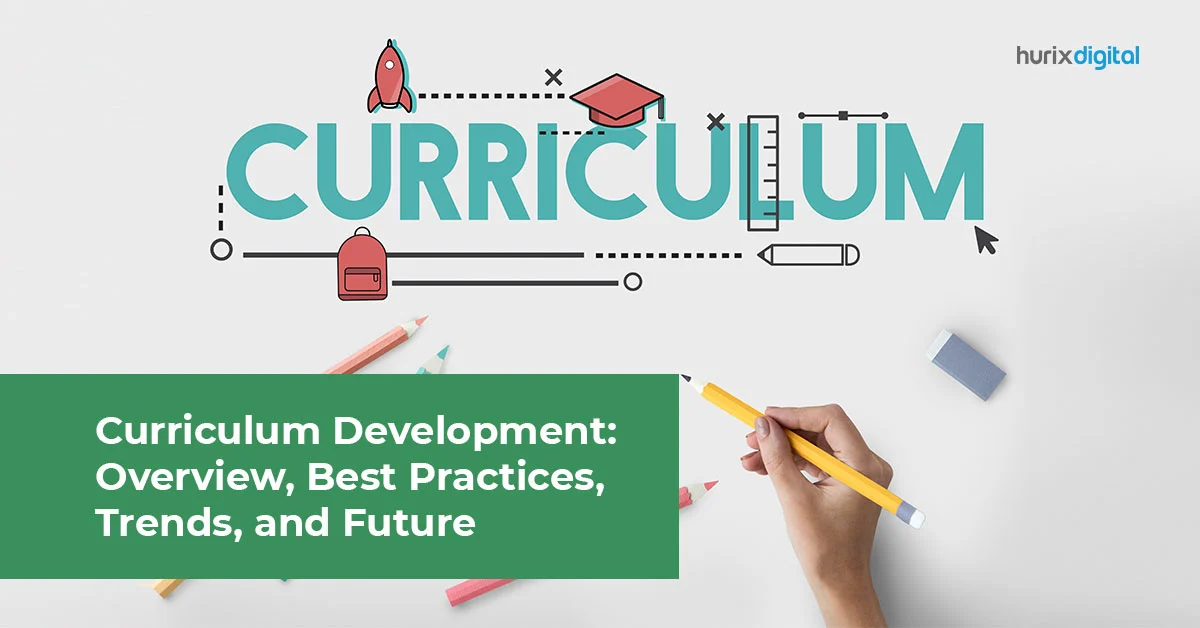Summary
This blog discusses trends transforming K-5 education like student-centered learning and use of technology. It shares best practices for educators to build an engaging classroom environment centered around inquiry, collaboration and inclusion.
Table of Contents:
- Why should educators focus on curriculum design in k-5 education?
- Steps to design a balanced curriculum
- Best practices to create an engaging learning environment
- Blooming Brighter with Hurix Digital
Early childhood education sets the foundation for future learning and development. As an elementary school teacher, it is crucial to build an inclusive and engaging learning environment that motivates young students. In recent years, various trends and philosophies like student-centered learning, collaborative learning, and technology integration have transformed k-5 education. This blog shares best practices and strategies for educators to create a vibrant classroom where students can thrive.
In the past, k-5 classrooms predominantly followed a teacher-centric approach with students passively receiving instruction. However, research shows that young children learn better through active participation, peer collaboration, and hands-on activities. The current focus is on student-centered learning where students drive their own learning process through inquiry, exploration, and critical thinking. Studies reveal that when children are empowered to take ownership of their learning, they are more engaged, confident, and likely to retain information.
Another vital trend is incorporating collaborative learning opportunities in K-5 education. Group projects, discussions, peer tutoring, and other cooperative activities teach important skills like communication, problem-solving, and teamwork. Cooperative learning also promotes inclusion by enabling children with different abilities to work together. The classroom transforms into a tight-knit community where each student feels valued.
The Covid-19 pandemic propelled extensive use of educational technology and blended learning models. Classroom engagement techniques are evolving to integrate online tools for remote collaboration, personalized learning apps to target each child’s needs, and interactive media like games and simulations for multisensory instruction. When used meaningfully, technology can make learning fun and accessible.
Why should educators focus on curriculum design in k-5 education?
An engaging, well-planned curriculum framework aligned to learning goals and student needs is fundamental for impactful k-5 instruction. Here are some key reasons:
- Provides structure and continuity across grade levels
- Allows integrating themes and building interdisciplinary connections
- Ensures learning objectives and outcomes are met
- Caters to diverse learning styles and paces
- Incorporates innovative and research-backed methods
- Fosters skill development and critical thinking
- Enables continuous assessment and improvement
Steps to design a balanced curriculum
- Set curriculum goals based on core concepts and skills students must learn. Consult national/state standards.
- Determine learning themes and connections between subjects.
- Create units and lesson plans around learning objectives. Include activities aligned to various learning styles – visual, auditory, kinesthetic etc.
- Incorporate technology meaningfully for creation, collaboration and engagement.
- Develop assessment models to gauge skill levels and learning gaps.
- Gather feedback from students, parents and educators to review and refine the curriculum periodically.
Best practices to create an engaging learning environment, and how can technology help?
Here are some best practices for maximizing student engagement:
- Promote student interaction through group work, discussions, peer review etc. Collaborative learning fosters teamwork and deeper understanding.
- Incorporate hands-on activities and classroom engagement techniques like interactive media, simulations, experiments, games etc. to make learning multi-sensory, enjoyable and applied.
- Use technology tools like interactive displays, educational apps, websites, and online platforms to enable blended learning. Technology integration makes material more immersive.
- Practice differentiated instruction to accommodate diverse learning abilities, strengths and needs. Personalized learning apps can help target each student’s level.
- Empower students to drive their own learning through inquiry-based learning, choice boards, genius hour passion projects etc.
- Create a welcoming classroom arrangement with different interactive zones. Ensure easy access to learning resources.
- Implement classroom rules, schedules and procedures clearly to maintain an organized environment. Consistent classroom management strategies are essential.
- Encourage student perspective through reflection journals, self-assessment surveys, class discussions etc. Provide regular feedback to boost confidence.
- Foster a positive classroom culture where every child feels included and supported. Inclusive classroom practices enable this.
With sound curriculum planning, research-based instructional strategies, and a nurturing classroom ethos, teachers can design engaging K-5 learning experiences that develop young students holistically.
Blooming Brighter with Hurix Digital
At Hurix Digital, we offer a vibrant bouquet of resources to empower educators:
- Technology solutions: Interactive learning platforms, and AI based, data-driven tools to personalize learning experiences
- Content service providers: Creation of engaging educational content, and access to curriculum experts, educators, and content creators who specialize in k-5 education
Join us on this journey of nurturing young minds. Let’s work together to ensure every child’s k-5 education is an enriching, innovative adventure that sparks curiosity, ignites imagination, and cultivates the talents of tomorrow.
Get in touch with us to start a conversation.











